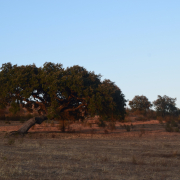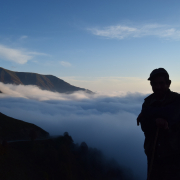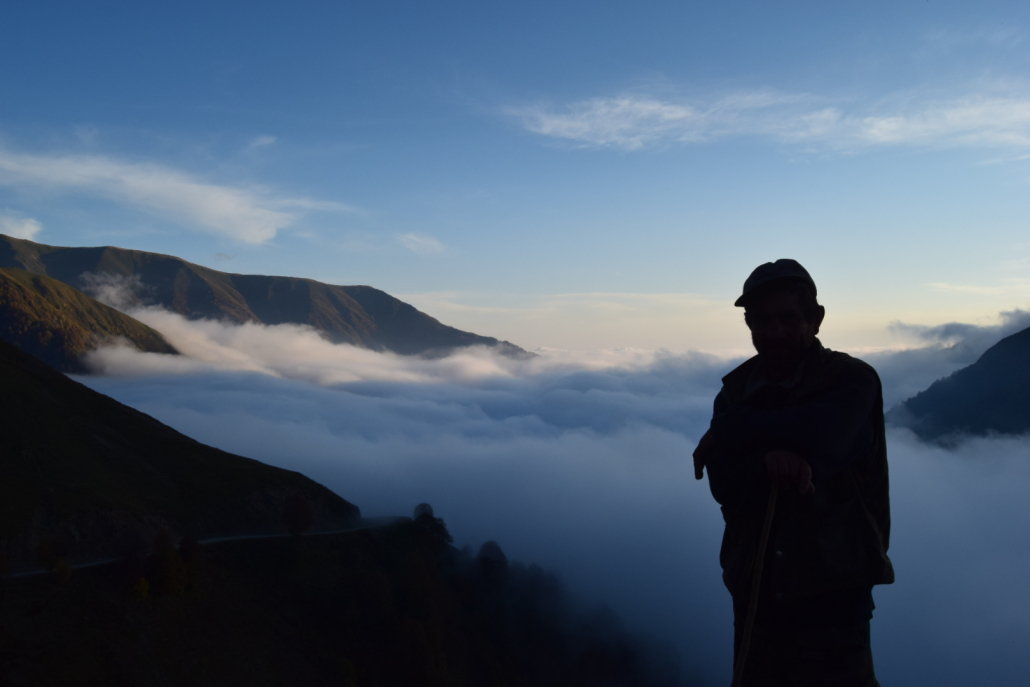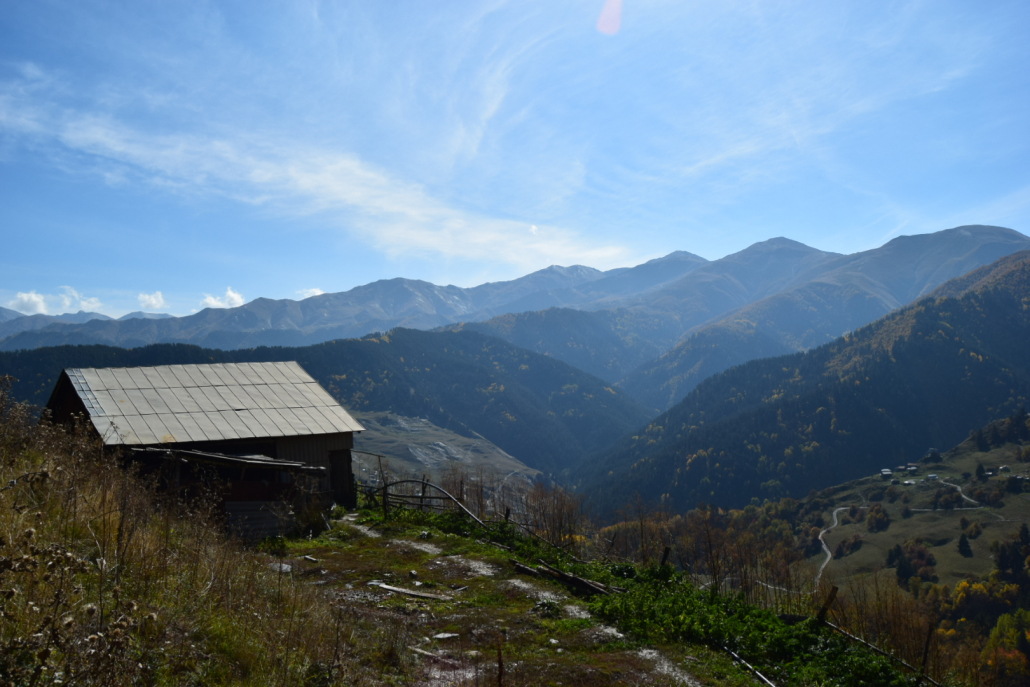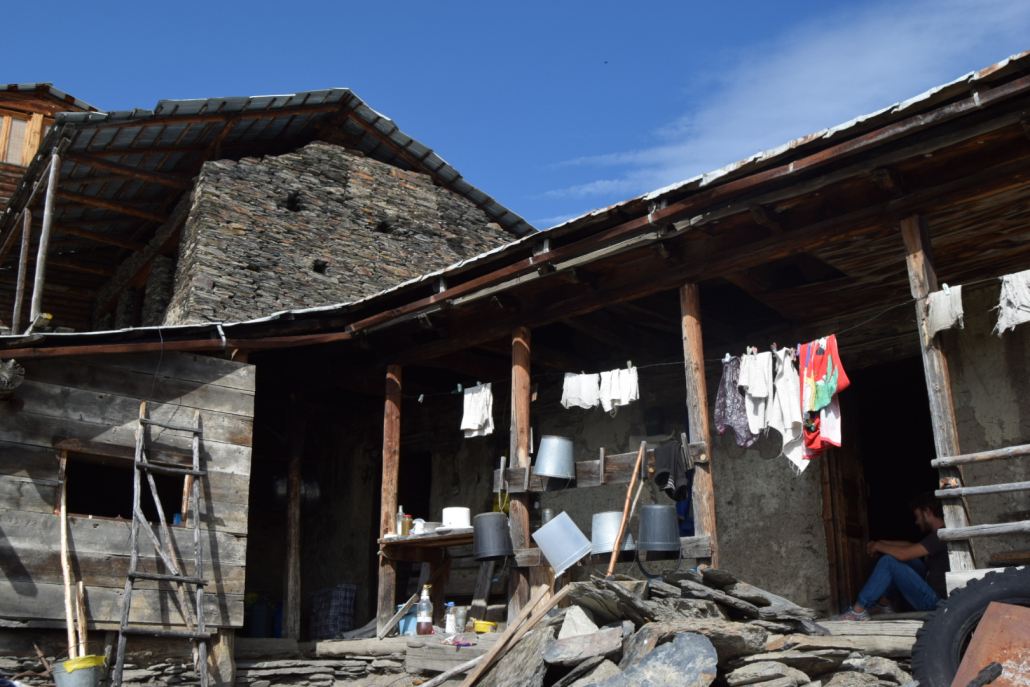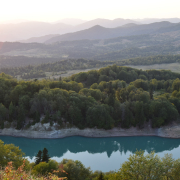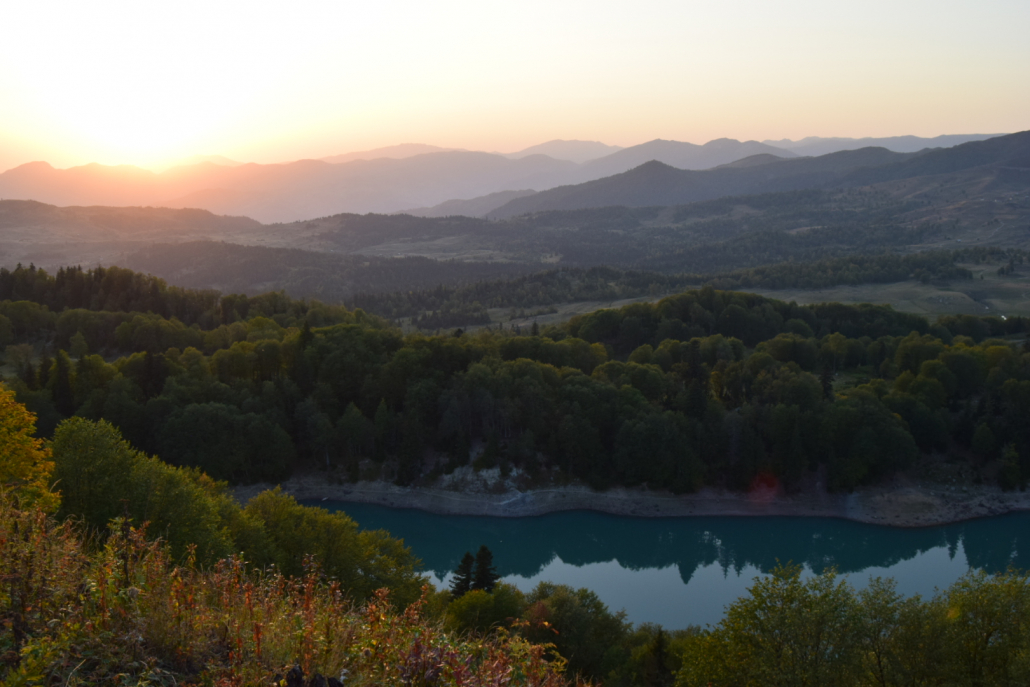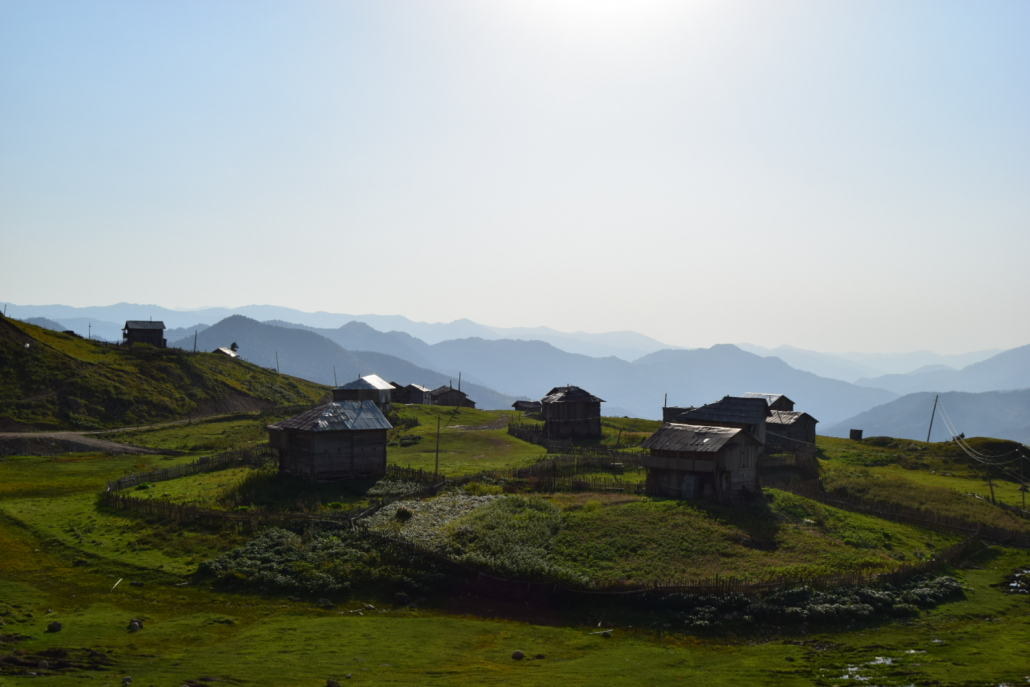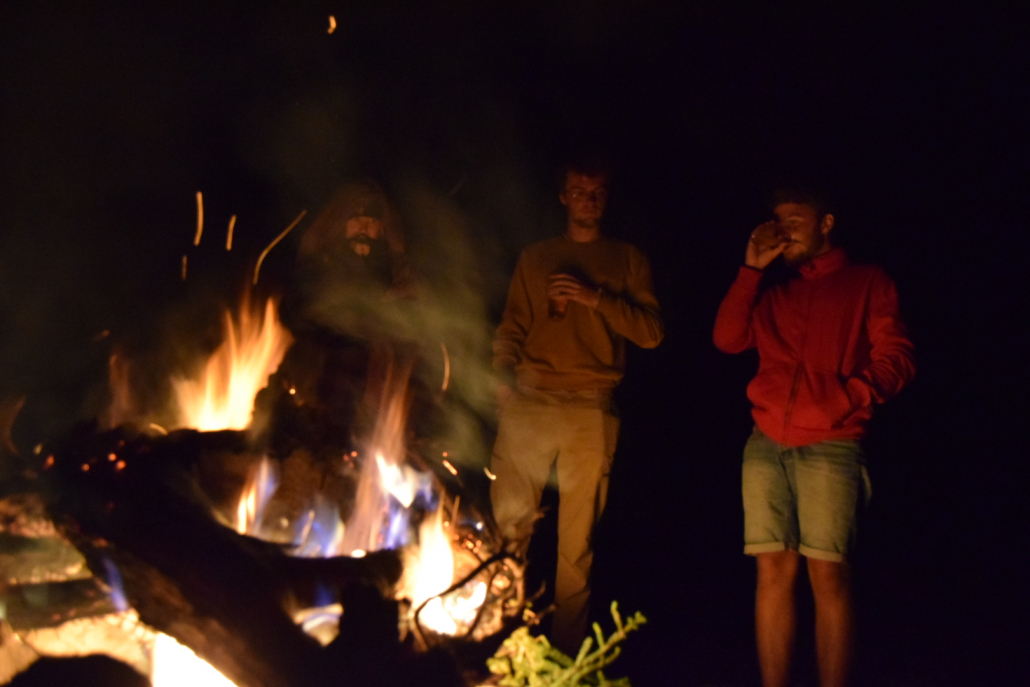Routes to travel around Spain as a backpacker: Extremadura and Andalucía
This article was originally published in Spanish on Worldpackers
Paradisiacal beaches, snow-capped peaks, valleys, deserts, historical monuments, gastronomic delights, age-old traditions: welcome to Extremadura and Andalucía, two Spanish regions that will leave you enchanted and speechless. Here, I have prepared two routes that cover everything you need to know to traverse these Autonomous Communities. You will discover landscapes that will compel you to pause, and some of the most historical and art-filled cities in the country.
For the development of these itineraries, I have taken into account several aspects, among them: the architectural and natural attractions, the possibility of choosing different means of transport, the option to modify the route depending on your time and interests, and if the starting city of the journey has an airport.

1- Western Route
Where: Western Spain, Autonomous Communities of Extremadura and Castilla y León.
Route: Seville, Mérida, Cáceres, Plasencia, Salamanca, Ávila and Segovia.
Recommended time: 15 days
Attractions: Roman Theatre of Mérida and Aqueduct of Miracles, Old City of Cáceres, Monfragüe National Park, Cathedral of Plasencia, Cathedral of Salamanca, Sierra de Gredos, Wall of Ávila and Aqueduct of Segovia.
When I am asked about my city, Plasencia, I always answer “it is between Madrid and Portugal”, because the west of Spain, unfortunately, is the least known region of the country, even though most of the cities and monuments on this route have been declared World Heritage Sites by UNESCO (archaeological site of Mérida, Monastery of Guadalupe and the Old Town of Cáceres, Salamanca, Ávila and Segovia) and for its lush nature, with parks such as Monfragüe and the Sierra de Gredos.
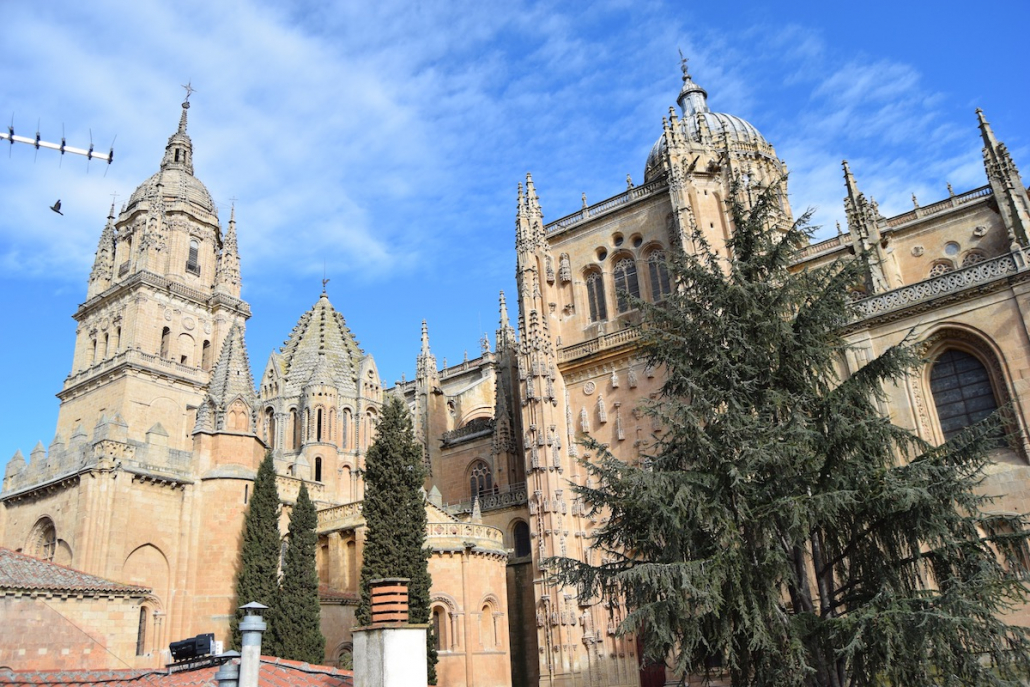
Vía de la Plata: Mérida, Cáceres, Plasencia and Salamanca
The Vía de la Plata was an ancient Roman road that connected Augusta Emérita (Mérida) with Asturica Augusta (Astorga) and has been used ever since, taking advantage of the natural corridor to travel through western Spain.
It has become a very famous hiking route because it links Seville with Santiago, but also because of the architectural, artistic, cultural and natural wealth of the provinces and cities it crosses.
Time slows down when you reach Extremadura, Spain’s most unknown region. Before you start exploring, take a few minutes to connect with the nature that surrounds you. Take a deep breath of the pure, fragrant Mediterranean forest air, walk barefoot through the nearest cold-water stream, and enjoy the silence as you gaze at the dark green hillsides skimming the clear sky on the horizon.
Once you’ve done that, you’re ready to visit Spain’s two largest provinces: Badajoz and Cáceres.
Cities in Extremadura: Mérida, Cáceres and Plasencia
I have noticed that many of the people I have met along the way are unable to locate Extremadura on the map despite having visited Spain, and I don’t blame them. It is very easy to overlook that a country is more than its capital and main cities.
But here, far from Madrid and Barcelona, you can find the rich legacy of Vetons, Romans, Visigoths, Muslims, Jews and Christians that has over-influenced the culture, architecture, gastronomy and traditions of western Spain.
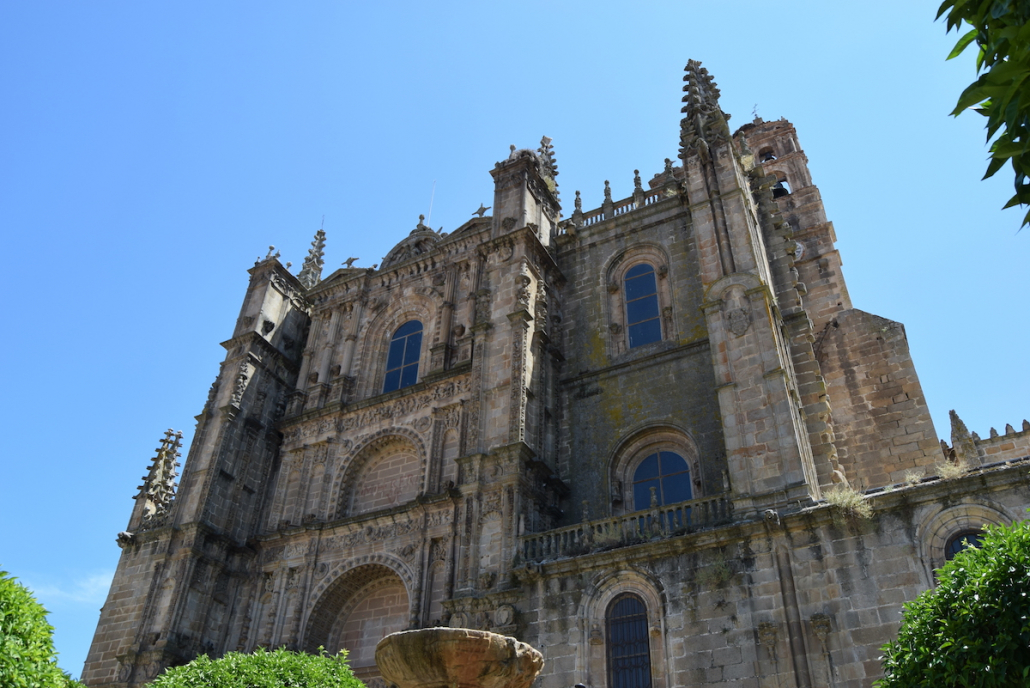
Mérida
Mérida was founded two millennia ago and became the capital of the Roman province of Lusitania. To walk through its streets is to travel back in time to the splendour of the Roman Empire, especially during the summer when the International Classical Theatre Festival is held. Many of its buildings are in a good state of preservation, such as the Aqueduct of Miracles and the Roman Theatre of Mérida, which is why these archaeological attractions have been declared a World Heritage Site by UNESCO.
One of my favourite places in Mérida is the Arab Alcazaba. In the centre of the Alcazaba, you will find the entrance to the most beautiful cistern of Extremadura, and from the walls, you can see the Roman Bridge over the Guadiana River at sunset. It is magical.
Cáceres
Travelling to the city of Cáceres is a change of scenery: you will go from Roman times to the mediaeval period in less than an hour.
The Old City is one of the best preserved in Europe, and it holds the title of Monumental City like Prague and Tallinn. The Plaza Mayor is the meeting point for locals, and on the first weekend in May, it becomes the main stage for WOMAD, an international music festival that has been held in Cáceres since 1992.
The Arco de la Estrella is the main gateway to the walled enclosure, a labyrinthine complex of cobblestone streets full of charming and well-hidden corners that you will reach by recommendations from the locals, or by chance, so forget about maps and let your intuition guide you!
One of my favourite neighbourhoods is San Antonio, and it’s just past the Concatedral. If you see people kissing the feet of a saint, don’t be scared, it’s a tradition to get lucky in life. Before arriving in San Antonio, you can climb the bell tower of the Church of San Francisco Javier, it has the best views of the city and just behind, on the Cuesta del Marqués, you will find the old Jewish quarter. I recommend you to visit the Arab House-Museum Yusuf Al-Burch, have a drink on a terrace and take a walk through the Olivar de la Judería park.
Plasencia
Plasencia is a very welcoming and timeless city. In the walled enclosure, there are Renaissance palaces such as Mirabel, Romanesque churches and a cathedral complex with priceless artistic wealth, with the peculiarity that the New Cathedral is unfinished and attached to the Old Cathedral.
On Tuesday and Friday mornings, there is a market with regional products in the Plaza Mayor, and if you feel like having a drink afterwards, ask a local to point you towards Calle San Esteban or Calle de Los Vinos. If you’re lucky, maybe you’ll find me there!
The north of Cáceres is nature in its purest form: forests, mountains, natural pools, unique places like the Garganta de Los Infiernos Nature Reserve, cold rivers that rise in the mountains and valleys where cherry blossoms bloom in spring and legends are shared about the Serrana and magical beings on summer nights.
In addition, there are places with history, such as the Castle of Jarandilla de la Vera and the Monastery of San Jeronimo de Yuste, where Emperor Charles V spent his last years, the Cemetery of the German Soldiers of World War II and the region of Las Hurdes.
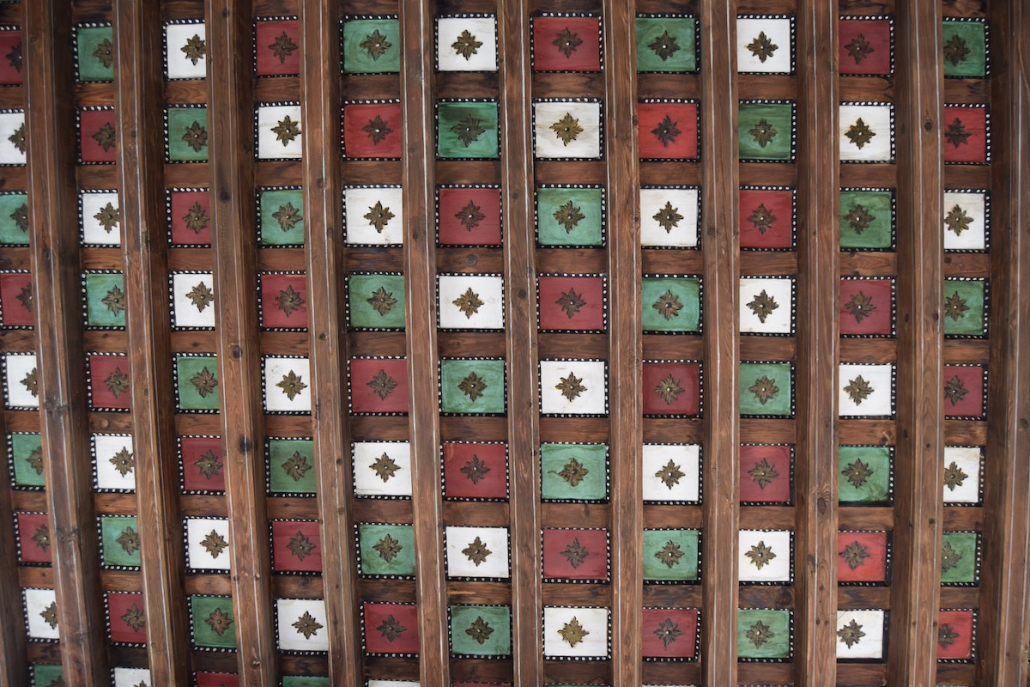
Cities in Castilla y León: Salamanca, Ávila and Segovia
Salamanca
Salamanca is the university city par excellence, and you will fall in love with it for two simple reasons: the atmosphere and its impressive monuments. The Plaza Mayor is magnificent, the most beautiful and crowded of this route through Spain.
Under the arcades, right next to the town hall, you will find the legendary Café Novelty, the meeting place of many great contemporary Spanish writers.
The Cathedrals of Salamanca will leave you speechless, not only for their architecture and the artistic treasures they hold inside but also for the incredible views of the city from the bell tower. It is tradition to look for the “astronaut” carved on one of the doors of the New Cathedral and the “frog” that brings luck in studies on the front of the University of Salamanca.
If you have read “El Lazarillo de Tormes” and “La Celestina”, you will know that they are set here, so do not miss the opportunity to take a walk through the Orchard of Calixto and Melibea and to see the boar of the Roman Bridge, where Lazarillo learns his first lesson.
I’d advise you not to leave Salamanca without taking a walk through the Barrio del Oeste, an open-air urban art museum, or enjoying a coffee at Casa Lis, the Art Deco and Art Nouveau museum.
By the way, there are many legends and curiosities about the city that I haven’t mentioned because it’s better to have a Salamanca local recite them to you during your visit; ask about “La Casa de las Muertes”, “Lunes de Aguas”, the treasure of the Casa de las Conchas or “La Cueva de Salamanca”. I’m sure you’ll be surprised!
Ávila and Segovia
Your backpacking route through Spain continues in front of the two-thousand-year-old Aqueduct of Segovia, one of the most important and best preserved Roman engineering works in the Iberian Peninsula. From El Pinarillo, you will have the best views of the old town of Segovia at sunset, with the imposing bell tower of the Cathedral and the ship’s prow silhouette of the Alcázar on the wall.
I recommend a visit to the “Spanish Versailles”, the Royal Palace of La Granja de San Ildefonso, 12 kilometres from the city centre.
If you are passionate about architecture and nature, you will adore the province of Ávila. The city walls are the best preserved in Spain and have been declared a National Monument. The Cathedral is considered the first representative of Gothic architecture in the country, and there are many religious and civil buildings in perfect condition, so walking through the old town you will have the impression of living in the splendour of Ávila from days gone by.
The Sierra de Gredos Regional Park is in the south of the province and is a unique environment with diverse landscapes: forests, meadows, lakes and rivers, the Cuevas del Águila in the Tiétar Valley, the glacial cirque of Gredos, the Laguna Grande and the Almanzor, the highest peak in the province. Bring your tent because there are several areas where you can camp.
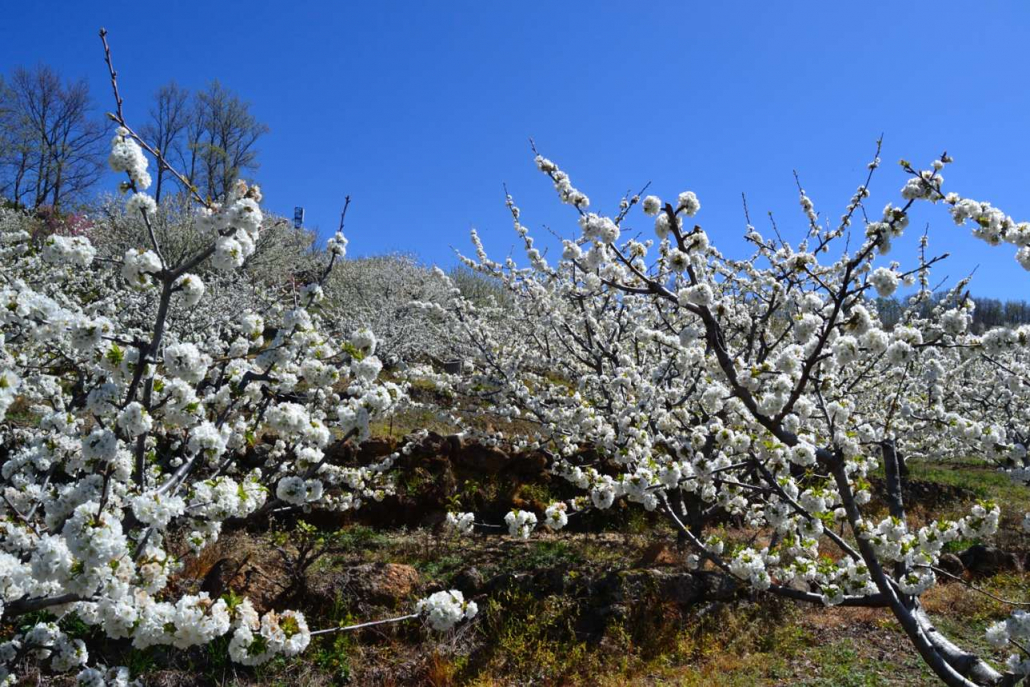
Tips for travelling in western Spain
If you fly directly to Madrid, I recommend doing the itinerary in reverse (from Segovia to Seville) and if you have more time, continue with the Andalusian Route. But if you start from Seville, when you arrive in Salamanca you will have two options: finish the Western Route in Madrid or continue on to the Camino de Santiago.
Mérida is a city that can be visited in two days. It is worth going to the Museum of Roman Art and buying a ticket to the monumental complex because it includes the Theatre and Amphitheatre, the Roman Circus, the Alcazaba, the Columbariums, the House of the Mithraeum and the Crypt of the Basilica of Santa Eulalia.
On this route through Spain, take the opportunity to discover the province of Cáceres, it is spectacular! The Old City of Cáceres can be visited in one day, but I recommend you stay two or three. It is a university town, so if you want to party, organise yourself to get there on a weekend.
You can also spend a day in Trujillo and another in the Royal Monastery of Our Lady of Guadalupe, declared a World Heritage Site for its historical value and harmonious blend of Gothic, Mudejar, Renaissance, Baroque and Neoclassical styles.
In summer, the festivities of most towns and cities of northern Extremadura are celebrated, and many activities take place: the Astronomical Observatory of Monfragüe organises several free events of scientific dissemination and stargazing, and in July, the Festival of the Conversos is held in the Jewish quarter of Hervás.
In August, you can attend the Martes Mayor of Plasencia, a festival that dates back to its mediaeval origins, and the Roman city of Cáparra hosts the International Festival of Mérida with several classical theatre performances.
An unforgettable experience? Visit the abandoned village of Granadilla and take a boat ride on the Gabriel y Galán reservoir. It’s a perfect plan, although don’t forget to check the visiting and bus schedules before you go.
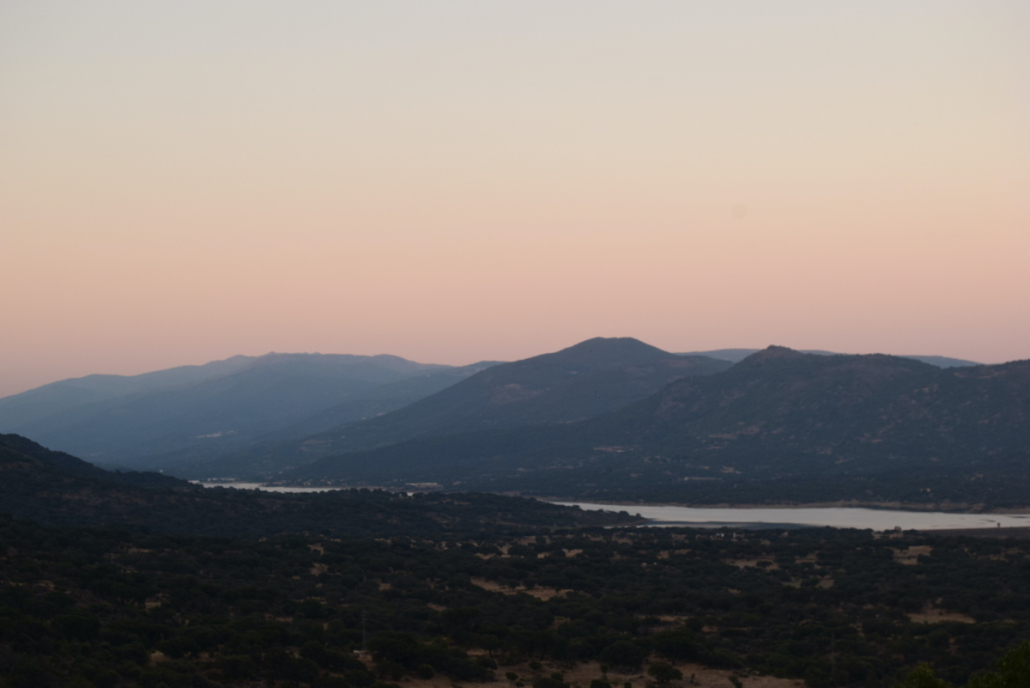
Accommodation and transportation for travel in Western Spain
In Mérida, Cáceres and Salamanca you will have no problems finding hostels because they are more visited destinations. In the rest of the region’s cities and towns, the cheapest options are youth hostels and campsites.
The best thing to do is to book your accommodation in advance, especially if you are travelling in summer because the rural houses are expensive, wild camping in Spain is not allowed and the campsites might be complete, especially if a festival is held nearby where you plan to stay.
If you like hiking or travelling by bike, I recommend you to do this backpacking route through Spain in spring. Hitchhiking is not a common practice in this area, so be prepared to wait a bit longer than usual if you decide to try it.
And remember: in Spain, it is illegal to hitchhike on highways and freeways, but if you do it on conventional highways and roads, you won’t have any problems.
2 – Andalusian Route
Where: Southern Spain, Autonomous Community of Andalucía
Route: Seville, Córdoba, Jaén and Granada
Recommended time: 15 days
Attractions: Cathedral of Seville and La Giralda, Real Alcázar of Seville, Mosque of Córdoba, Medina Azahara, Natural Park Sierras de Cazorla, Segura and Las Villas, The Alhambra, the Generalife and Sierra Nevada.
Andalucía is one of the historical autonomous communities of Spain, and its cultural wealth has crossed borders: It is the cradle of flamenco and flamenco singing, has festivals of international interest such as Semana Santa in Seville, Granada and Málaga, the Horse Races in Sanlucar de Barrameda or the Carnivals of Cadiz. It’s also the land of celebrated artists such as Séneca, Averroes, Velázquez, Picasso, María Zambrano, Lorca and many others.
The beauty of the provincial capitals and their increasingly multicultural atmosphere attract travellers from all over the world who are looking for more authentic experiences than they could experience in Madrid or Barcelona. Andalusia has always been closely linked to the land, and it is possible to escape the big cities for a few days to connect with nature and discover its charming villages.
On this route you will pass through valleys, olive groves, mountain ranges, snow-capped peaks, forests and golden sandy beaches, but also through two of the most beautiful cities in the world: Seville and Granada. Grab your backpack and a map, we’re going on a trip!

Seville
Your trip starts in my second home, Seville, one of the most beautiful cities in the world and the capital of Andalucía. Tradition and modernity coexist daily in the historic centre, one of the largest and best preserved in Europe. From the Giralda – the bell tower of the Cathedral and minaret of the ancient Mosque – you can contemplate the Archivo de Indias and the Real Alcazar, a monumental complex recognised as a World Heritage Site by UNESCO, and the picturesque neighbourhood of Triana on the other side of the Guadalquivir River.
To discover Seville, it is best to get lost in the narrow streets of the Santa Cruz district, the old Jewish quarter, reach Plaza España and pass through all the provinces, climb the Torre del Oro and stroll along the river at sunset. At night you can go to the alternative bars of the Alameda de Hercules, the oldest public garden in Spain, and order a serranito (a warm sandwich with jamón serrano, fried green peppers and grilled meat) for dinner in one of the restaurants in the area.
Seville in spring smells of orange blossom and is full of life: there are concerts, festivals, processions during Holy Week and the April Fair, declared a Festival of International Tourist Interest in 1980.
In addition, it is the best season to escape to the Sierra Norte de Sevilla and to visit the Archaeological Ensemble of Itálica – the first Roman city founded in Hispania (currently in Santiponce) – because the European Youth Festival of Greco-Latin Theatre is held on April.
During your stay you can also visit: the Guadalquivir Marshes, a unique natural environment for its flora and fauna, ideal for bird watching; the city of Utrera, declared of Cultural Interest, and Osuna, noted for its monuments of Sevillian Renaissance style.
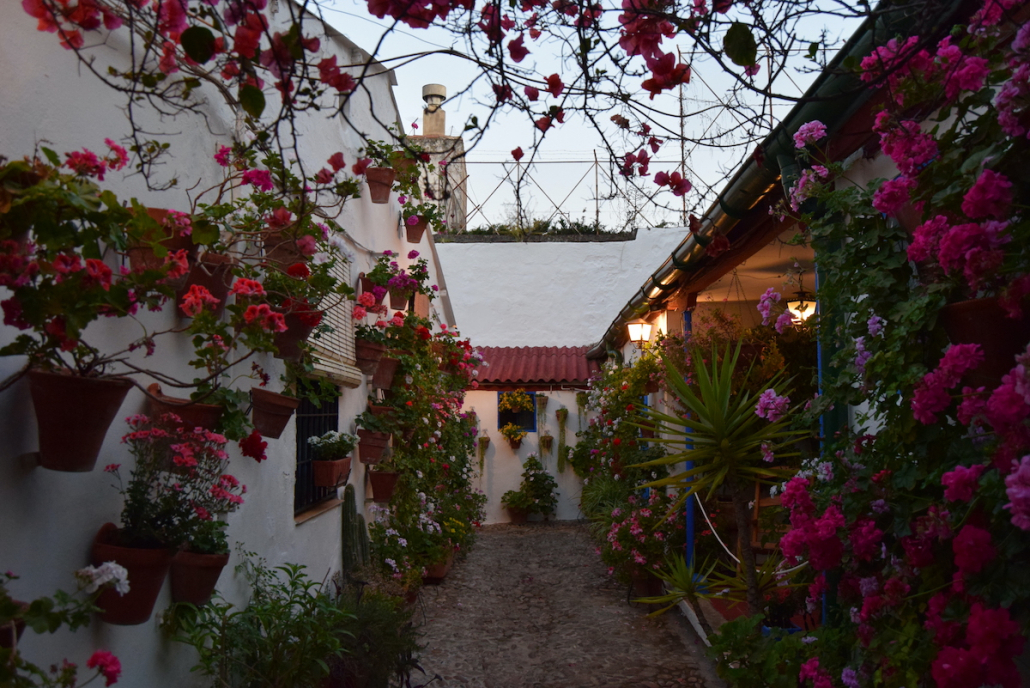
Córdoba
Córdoba is reached through the walled Carmona and Ecija, the City of Towers, and also through the Sierra de Hornachuelos Natural Park, a perfect setting for a boat ride on the Bembézar, hiking, mountaineering, climbing, canoeing or water skiing.
If April is the month of Seville, May is undoubtedly the month of Córdoba. The May Day procession known as the Battle of the Flowers kicks off the celebrations: the old quarter is filled with crosses decorated with flowers of all colours, and the traditional courtyards open their doors to the public to admire their beauty during the first two weeks of May.
Córdoba was the cultural and artistic epicentre of the Iberian Peninsula during the Middle Ages when it held the title of capital of Al-Andalus. Today it is the city with the most World Heritage titles in the world, including its historic centre, the caliphal city of Medina Azahara and the Festival de Los Patios Cordobeses (Cordoban Courtyards Festival).
Jaén
The Yeguas River separates the Sierra de Cardeña y Montoro Natural Park from the Sierra de Andújar Natural Park in the green province of Jaén. Green for its olive groves and extensive forests.
If you are looking to disappear and relax, take your backpack and get lost in the Natural Park Sierras de Cazorla, Segura and Las Villas, a biosphere reserve and the largest protected natural area in Spain, is simply fascinating to find such diverse wildlife in one place!
On the way to Jaén, you will find the Renaissance monuments of Úbeda and Baeza, both World Heritage Sites and must-see cities for lovers of sacred art and architecture. In the city known as the “capital of the Holy Kingdom”, you can visit the Cathedral where the relic of the Holy Face is preserved, the Arab baths and the Castle of Santa Catalina.
In Jaén, the custom of going out for a drink is deeply rooted, so take the opportunity to taste the local gastronomy and to ask the locals about popular legends, such as the “Lagarto de la Malena” (Malena’s Lizard).
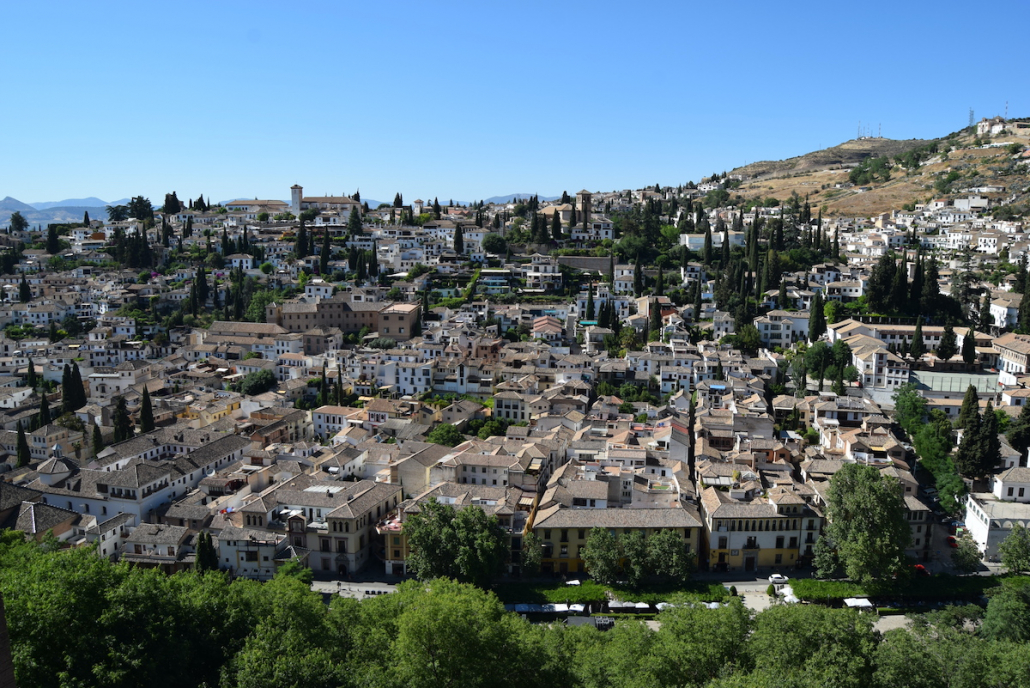
Granada
“Give him alms, woman, there is nothing in life like the pain of being blind in Granada”, many have read or heard these verses of the Mexican poet Francisco de Icaza, but only those who have contemplated Granada at sunset can understand them perfectly.
The mix of fragrances of the tea shops in Calle Elvira, a silent stroll along the Paseo de Los Tristes, and the views of the magnificent Alhambra from San Nicolás at sunset are just some of the experiences that await.
I’d advise you to contemplate the panoramic of the Albaicín from the Patio de la Sultana in the Generalife and the skyline of Granada from the caves of Sacromonte, dive in the hectic nightlife in the bars of Pedro Antonio and chill at the Huerta de San Vicente, where the local writer Federico García Lorca lived and found inspiration.
If you visit the city in summer, I recommend you traverse the villages of the Alpujarra, hike in the Sierra Nevada National Park, and relax on the beaches of Costa Tropical. If you love winter sports, get ready to ski in the southernmost ski resort in Europe during the snowy months.
Tips for travelling in Andalusia
If you want to discover Andalusia in all its splendour, travel in spring. Semana Santa (Holy Week) is celebrated with great fervour in the Andalusian capitals, but if you are short on time, it is best to avoid these days, or you will find yourself stuck in the crowds for hours. The last week of April is ideal to start the Andalusian Route. Seville is the fourth largest and most populated city in Spain, so it’s advisable to spend about four days there, enough time to visit the monuments and enjoy some sightseeing. You will then arrive in Córdoba the first week of May, and you will love to see the crosses and the patios decorated for the occasion.
Are you a nature lover? You will be captivated by Jaén and its natural parks, ideal for connecting with Mother Earth and the universe. Rest and accumulate all the energy you can, you will need it for your next destination!
Granada has a lot of art and history, but it is also a university city, so book at least three nights in a hostel and your ticket to the Alhambra in advance – you will thank me when you see the endless queues and the sad faces of the people who have missed out on the chance to visit the complex and the Nazaries Palaces.

Accommodation and transport to travel the Andalusian route
In Granada, Seville or Córdoba you will have no problem finding hostels because they are some of the most popular destinations in the country. In the rest of the region’s cities and towns, the cheapest options are youth hostels and campsites. It is best to book accommodation in advance, especially if you are travelling in high season, otherwise, you risk paying much more per night or that everything is full.
Regarding transportation, there are cheap flights from Madrid to the airport of Seville and Málaga. You will also find many promotions on the website of ALSA buses. If you are the kind of person who decides as you go along, the most convenient option to travel around Spain is to use car-sharing platforms (Blablacar or Amovens) because, in addition to meeting people, you will save money and time compared to conventional means of transport.


